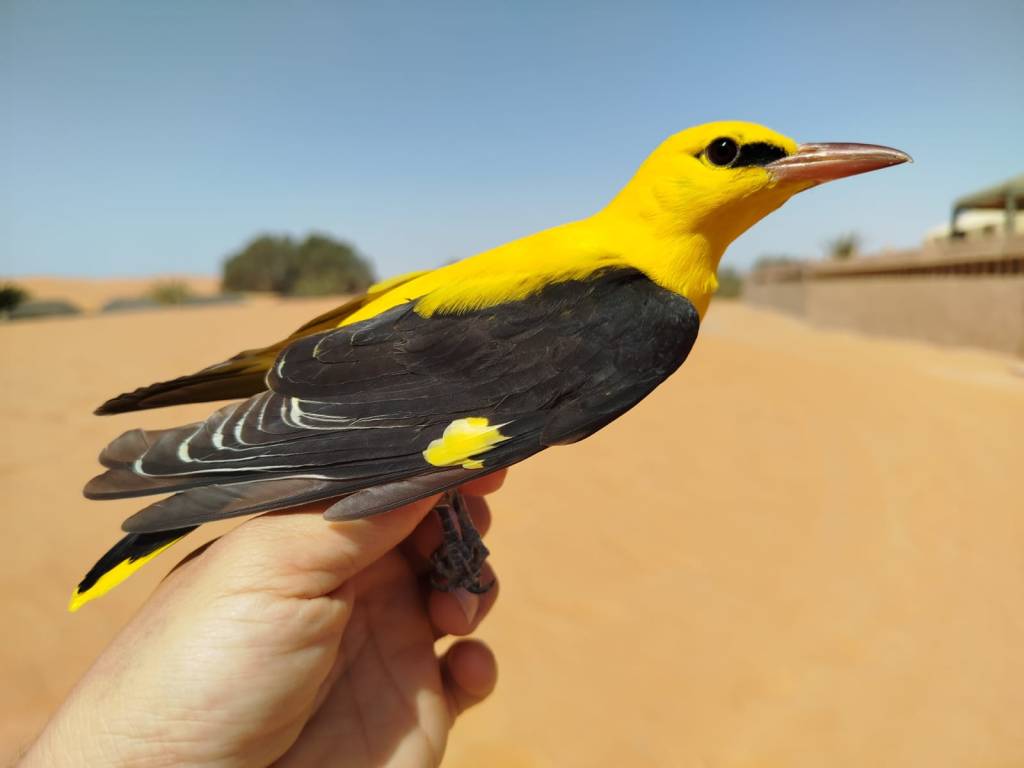The season continues rather slow, with an average of 19, 13 and 14 birds per day for the first three pentads (5-day periods) in April. Nonetheless, the ringing operation in Yasmina is crucial for a better understanding of the migration strategies and stopover ecology of many Afropaleartic migratory birds, as we regularly explain in the blog.
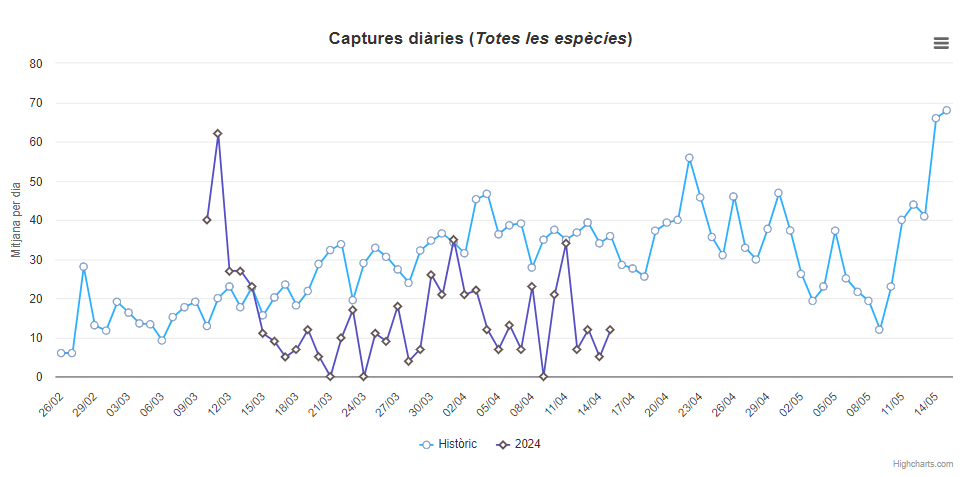
Some typically April species are turning up in very low numbers (Pied Flycatcher Ficedula hypoleuca, Reed Warbler Acrocephalus scirpaceus, Melodious Warbler Hippolais polyglotta, Western Olivaceous Warbler Iduna opaca, Sahara Olivaceous Warbler Iduna pallida reiseri) while others have just arrived (Garden Warbler Sylvia borin, Rufous-tailed Scrub Robin Cercotrichas galactotes).
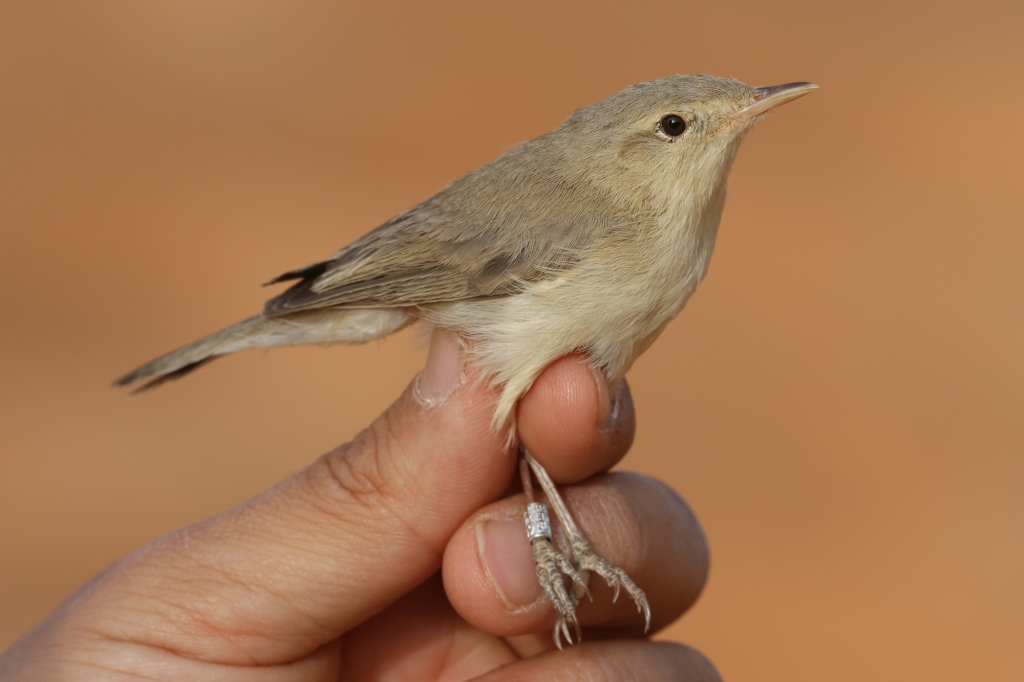
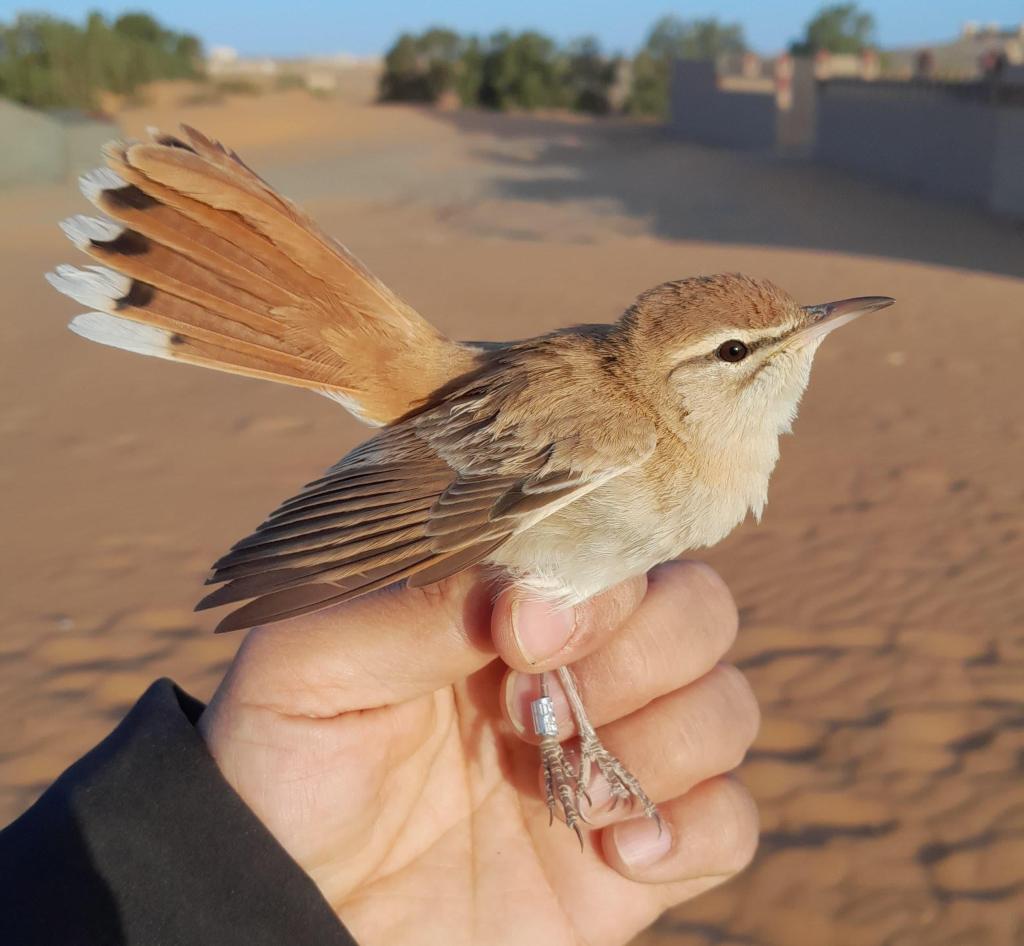
Lately, some days had low captures due to the wind conditions, which force us to have less nets open and/or for shorter periods. The dominant winds the last days have been easterly (which usually brings surprises) and northerly, the latter being probably the best conditions to have migrants stopping in the area, but also the worst wind in terms of the possibility of opening nets.
We also had our first Wryneck Jynx torquilla, Yellow Wagtail Motacilla flava and Tree Pipit Anthus trivialis; all regular migrants during the whole spring but seldom caught.
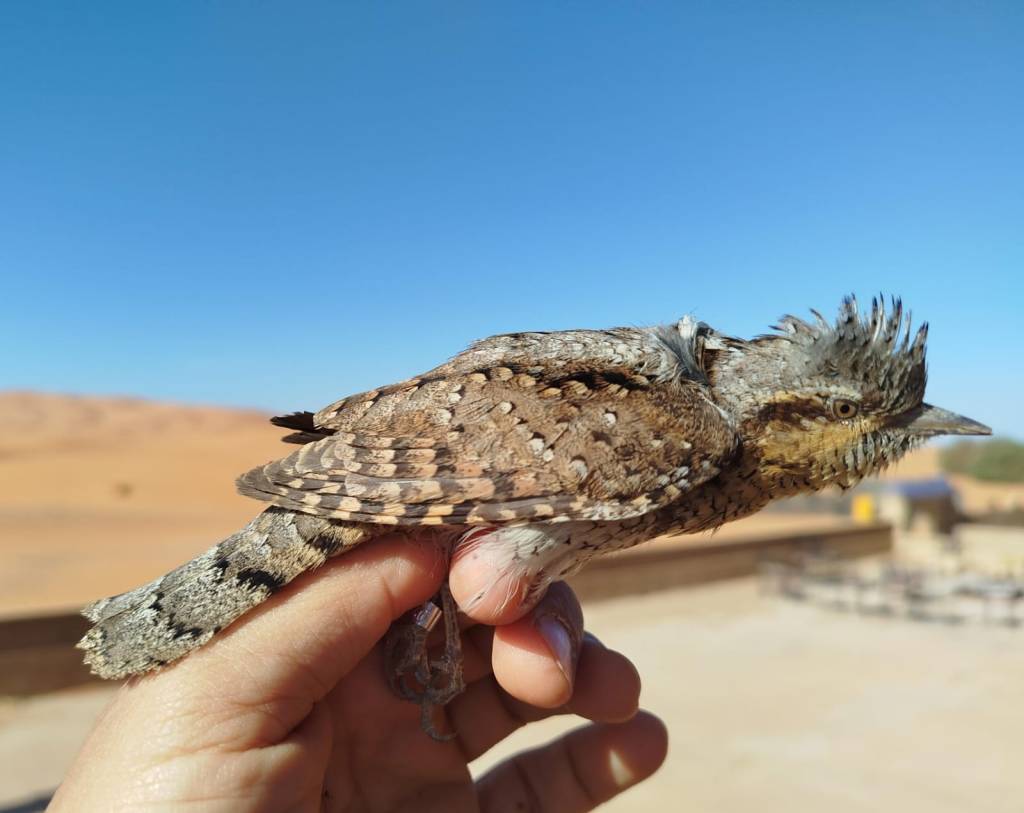
During the season we record casual information on insect migration, and this moth, that seems to be Ophiusa tirhaca, was quite a delight. Bird migration is amazing but also insect migration is quite spectacular!
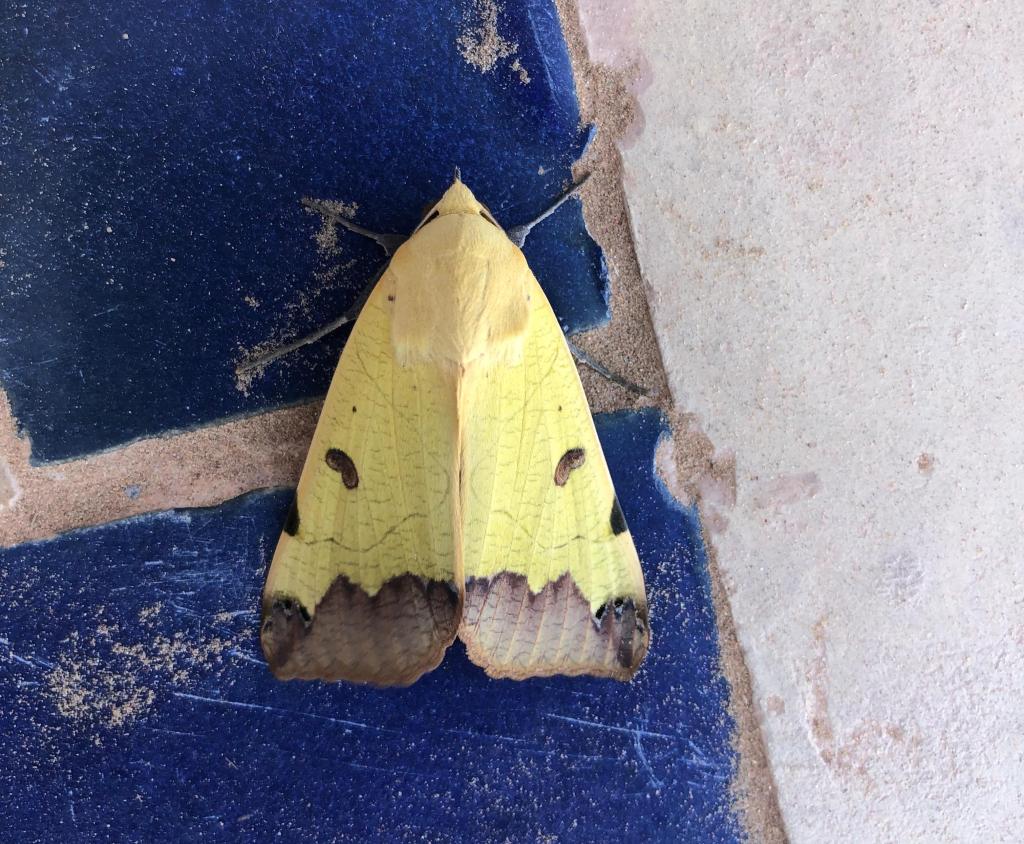
The easterly and north-easterly winds (straight from Tunisia across Algeria) brought a Collared Flycatcher Ficedula albicollis at the Hassilabied palmeraie, that was found by Vincent van der Spek and his group on the 6th. Collared Flycatchers have been caught in Yasmina in the past, but the last one was in 2013, so yet it was in everyone’s heads it also felt difficult. But fortunately, two individuals were caught!!! One on the 11th and another one 13th, both males.
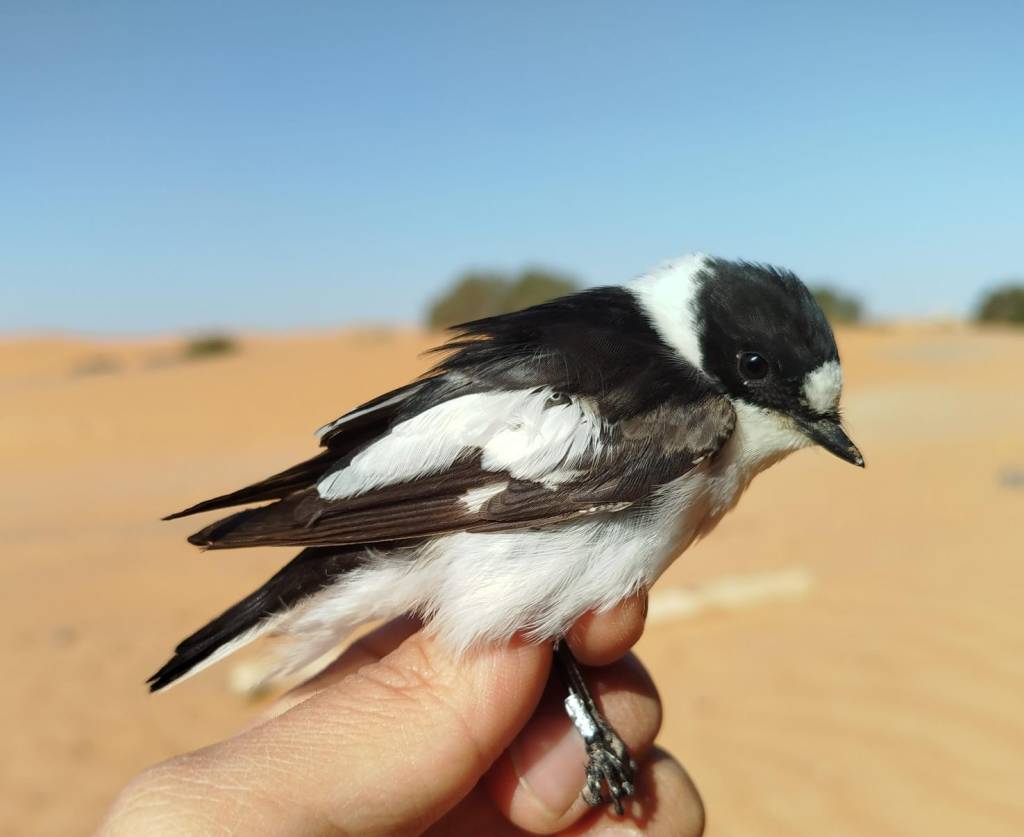
Interestingly, these days our colleagues from Illa de l’Aire (Menorca, Balearic Islands), who also run a spring ringing campaign, have experienced an unprecedented arrival of Collared Flycatchers at their station, with 13 individuals trapped (11 in one day!). This arrival doesn’t seem to be strictly related to easterly winds over the Mediterranean, and it could be a consequence of the mentioned winds over Algeria and that brought others all the way to Morocco. Thus, sometimes the wind drift in North Africa could strongly influence the passage. See more at the blog from Illa de l’Aire: https://illadelaire.wordpress.com/2024/04/16/historica-entrada-de-ficedula-albicollis/
Also, the last few days most of the team in Yasmina has been returning home after a successful field season, so we thank you again for the great work done! Now the ringers will be mostly alone at the site, and soon Pere will arrive to take care of the station until the end (expected for May 10th). We’ll keep informing!
Edit: we leave you with this cracking adult male Golden Oriole Oriolus oriolus from this morning!
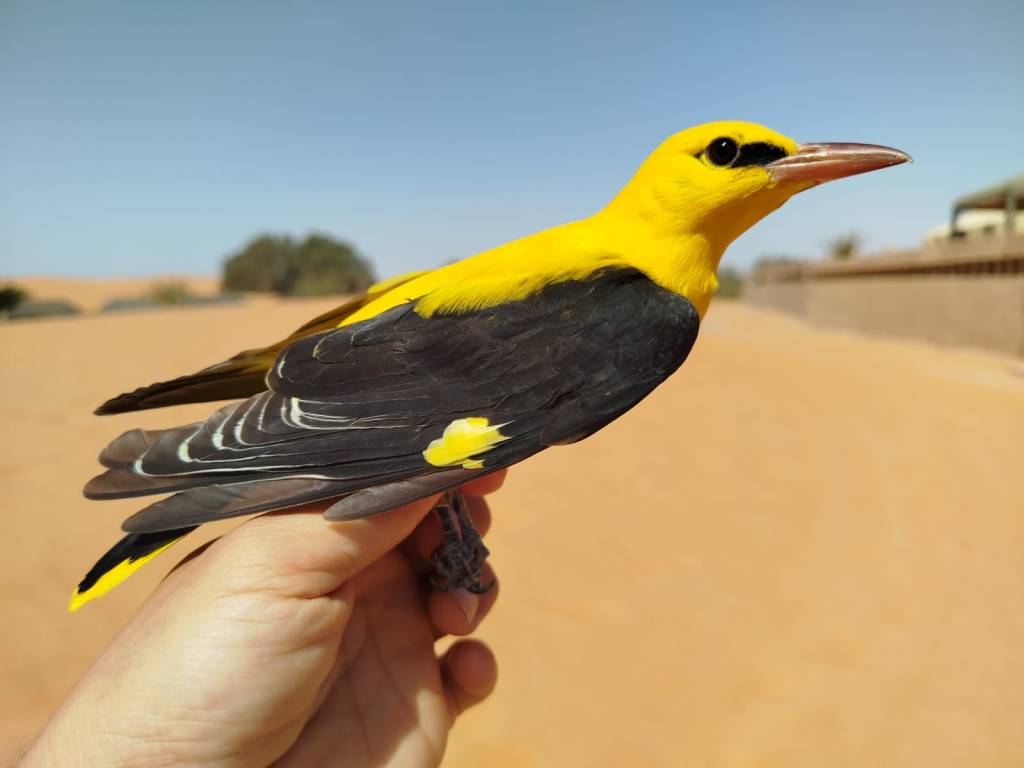
La temporada continua força parada, amb una mitjana d’ocells per dia de 19, 13 i 14 per cada una de les tres primeres pèntades d’abril. Malgrat els números, els estudis realitzats a Yasmina són molt importants per tal de poder conèixer millor les estratègies de migració i l’ecologia de moltes espècies migradores entre Àfrica i Europa, tal i com sovint expliquem al blog.

Algunes espècies típiques de l’abril estan apareixent en números molt baixos (mastegatatxes Ficedula hypoleuca, boscarla de canyar Acrocephalus scirpaceus, bosqueta vulgar Hippolais polyglotta, bosqueta pàl·lida occidental Iduna opaca, bosqueta pàl·lida sahariana Iduna pallida reiseri) mentre que altres just han arribat aquests dies (tallarol gros Sylvia borin, cuaenlairat Cercotrichas galactotes).
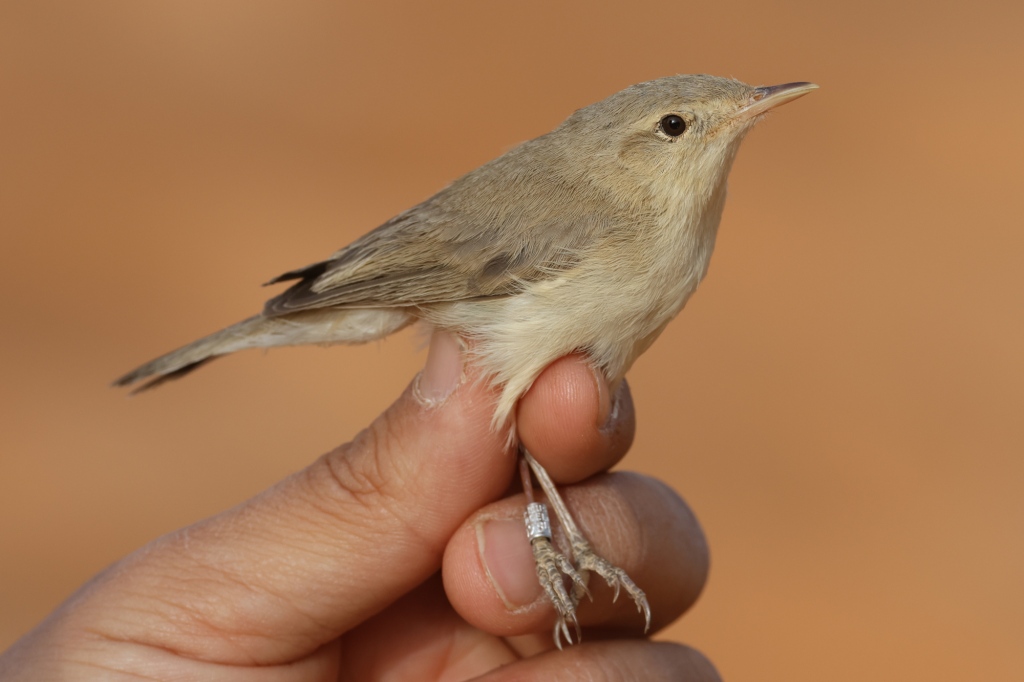
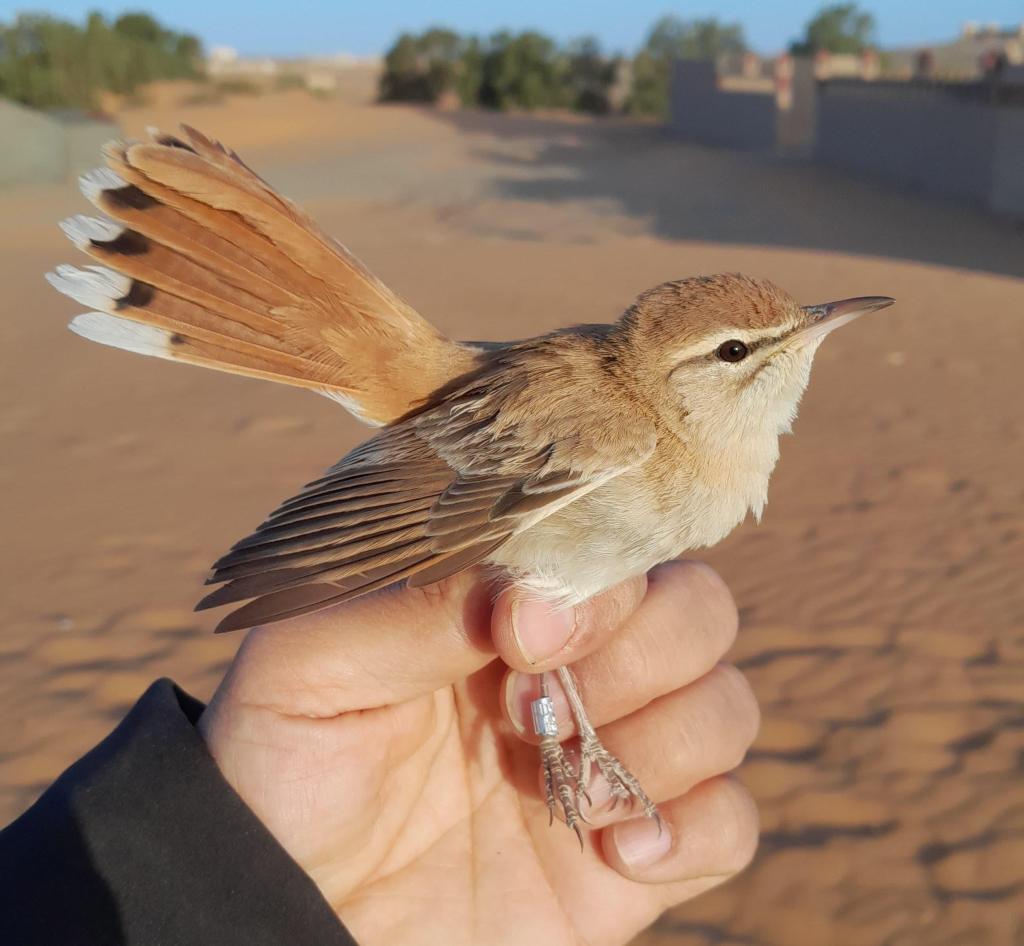
Darrerament, alguns dies hi ha hagut captures especialment baixes per els condicions de vent, que han limitat les hores de treball i el nombre de xarxes disponibles. Els vents dominants han sigut de l’est (que sovint porta sorpreses) i del nord, el darrer sent segurament el més ideal per a que s’aturin ocells a la zona, però alhora el pitjor en termes de la possibilitat de capturar.
També hem tingut els primers colltort Jynx torquilla, cuereta groga Motacilla flava i piula dels arbres Anthus trivialis; tots migrants regulars però en baix nombre i rarament capturats.
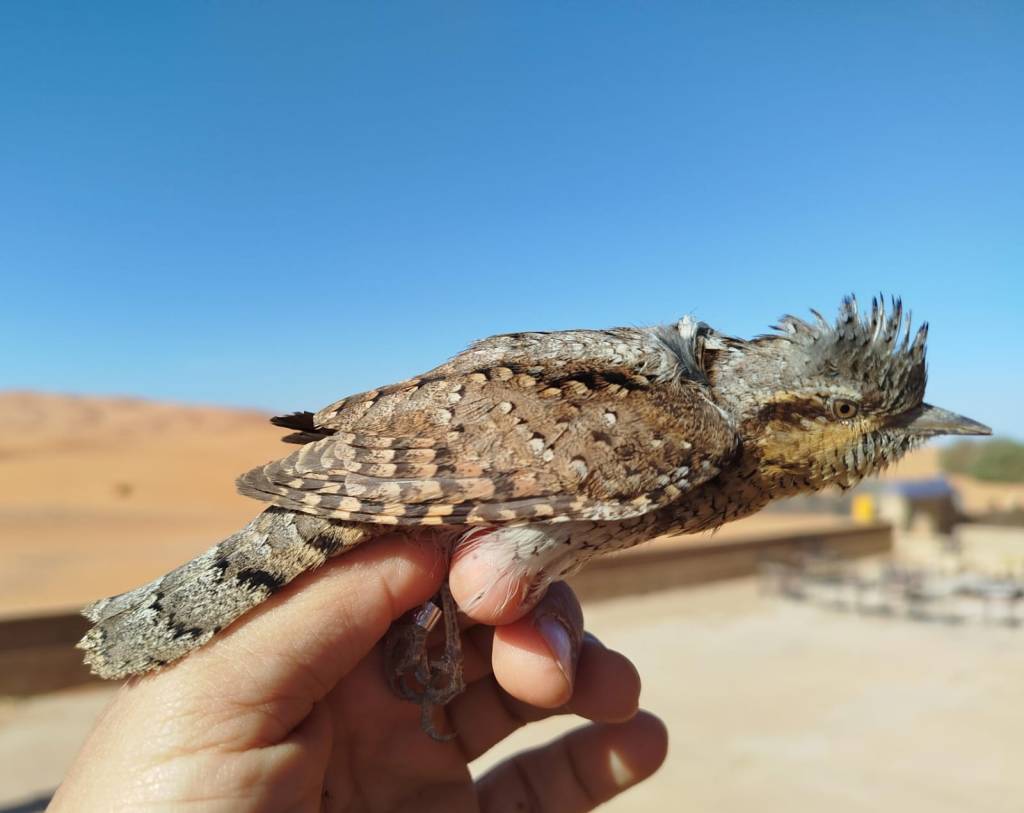
Durant la campanya recollim informació sobre la migració d’insectes a la zona, i vam gaudir d’aquesta arna que sembla ser una Ophiusa tirhaca. La migració dels ocells és espectacular, però la dels insectes també!!
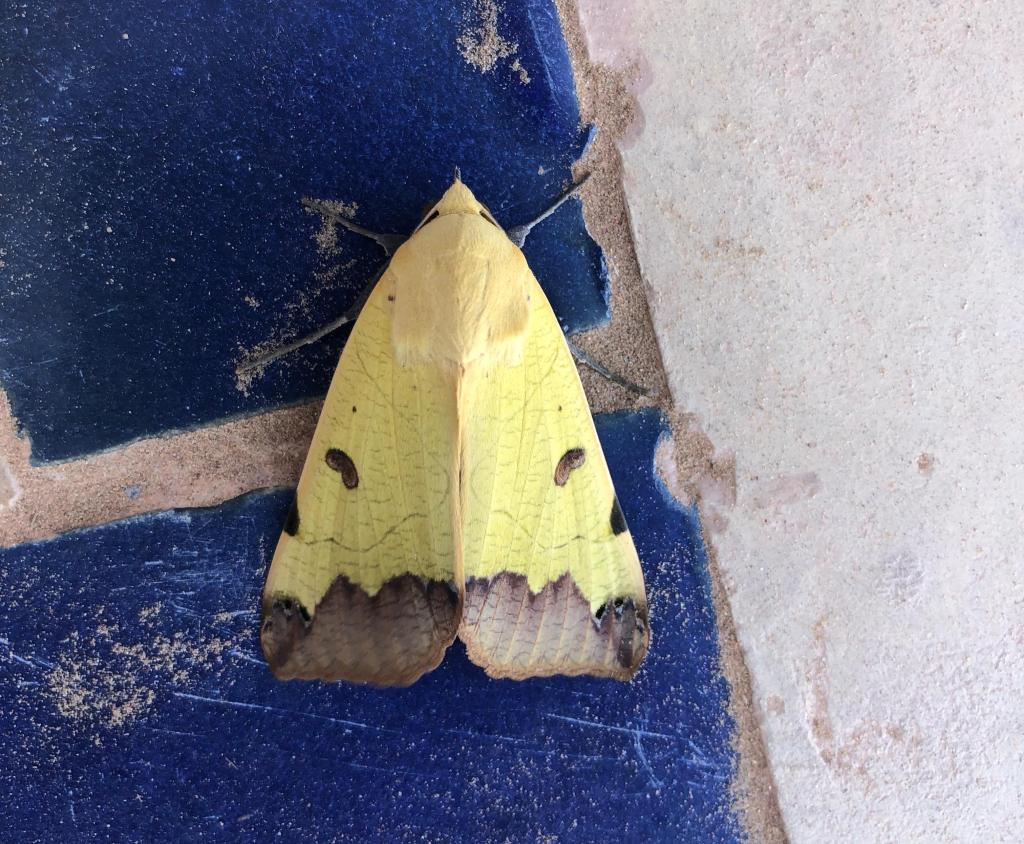
La llevantada i la tramuntana d’aquests dies (amb vent directe des de Tuníssia a través d’Algèria) va dur un papamosques de collar Ficedula albicollis a Hassilabied, trobat pel Vincent van der Spek i el seu grup, el dia 6. A Yasmina s’han anellat papamosques de collar, però el darrer va ser el 2013, pel que malgrat que tots hi pensàvem no semblava quelcom fàcil. Però afortunadament n’hem capturat dos!!! Un el dia 11 i l’altre el 13, tots dos mascles.
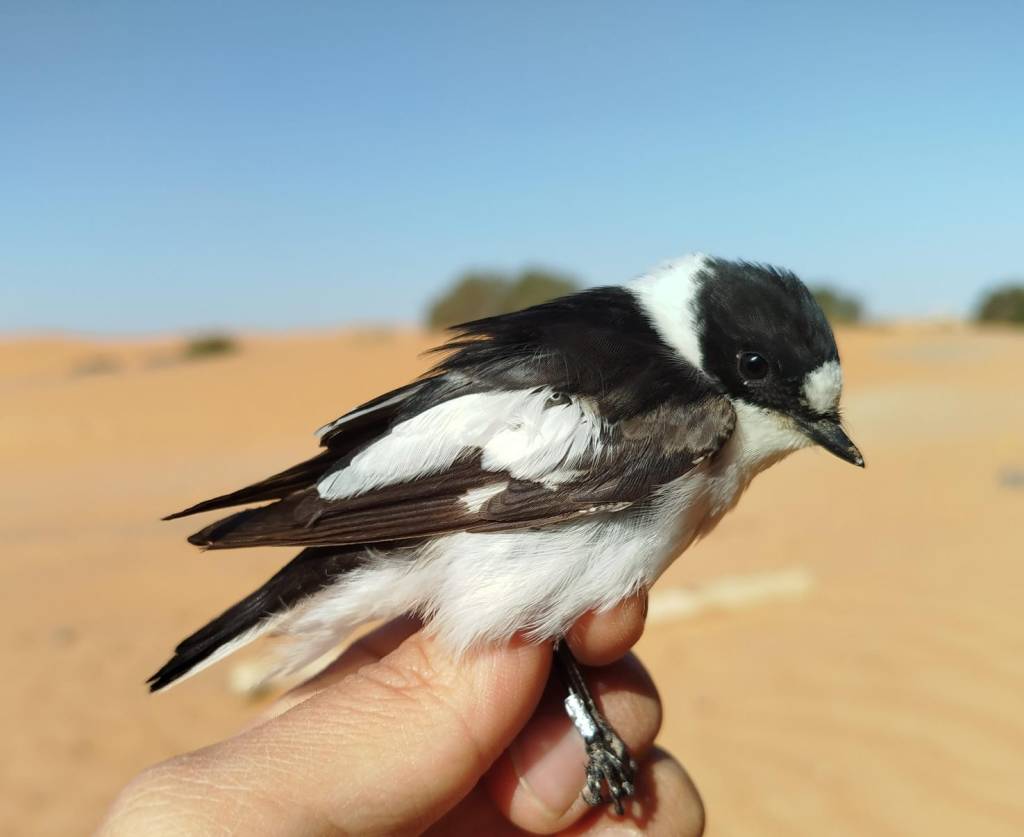
Justament aquests dies els companys de l’Illa de l’Aire (Menorca) han tingut una entrada històrica de papamosques de collar, amb 13 exemplars anellats (11 un mateix dia!). Podeu veure més informació al blog de la campanya: https://illadelaire.wordpress.com/2024/04/16/historica-entrada-de-ficedula-albicollis/. Aquesta arribada de papamosques de collar a Menorca podria anar relacionada amb la de Yasmina, ja que no sembla respondre a un patró clar de vents de llevant sobre el mar, així que podria anar relacionat amb els mateixos vents que van portar altres albicollis al Marroc. Així doncs, no només el vent sobre el mar podria estar afectant el pas pel Mediterrani occidental.
Els darrers dies la major part de l’equip de Yasmina ha anat tornant a casa després d’una temporada de camp ben exitosa, i agraïm a tothom de nou la seva ajuda! Ara els anelladors que acabaran la campanya quedaran sols, i ben aviat ja arribarà el Pere per a fer el darrer torn fins al maig (enguany fins el dia 10). Seguirem informant!!
Afegit final: us deixem amb aquest preciós mascle adult d’oriol Oriolus oriolus d’aquest mateix matí!
